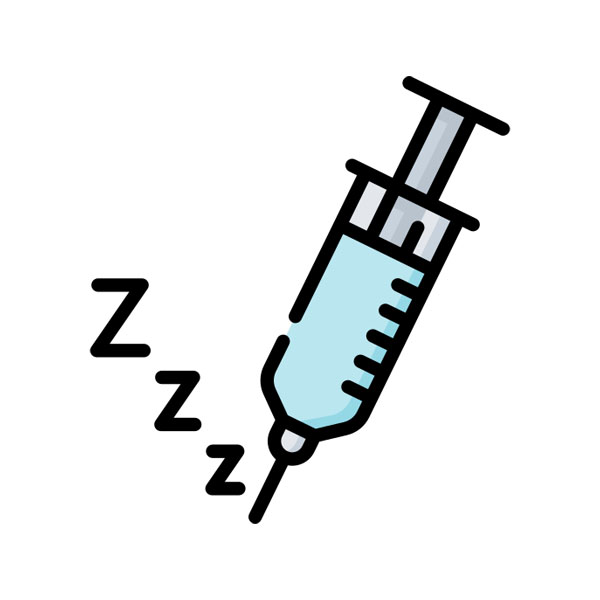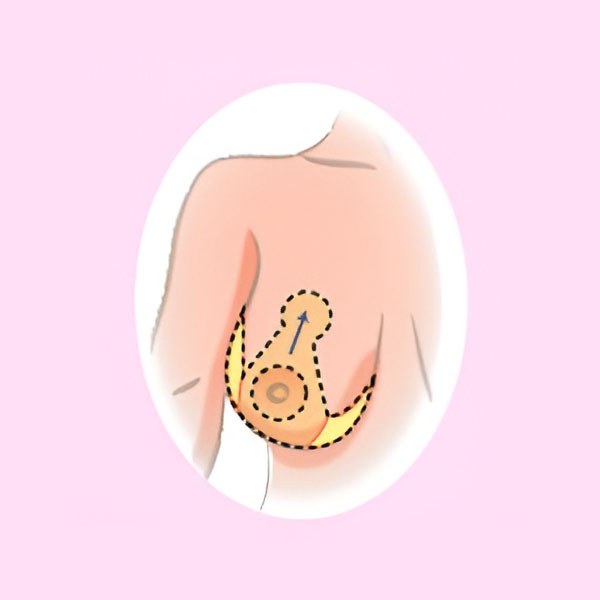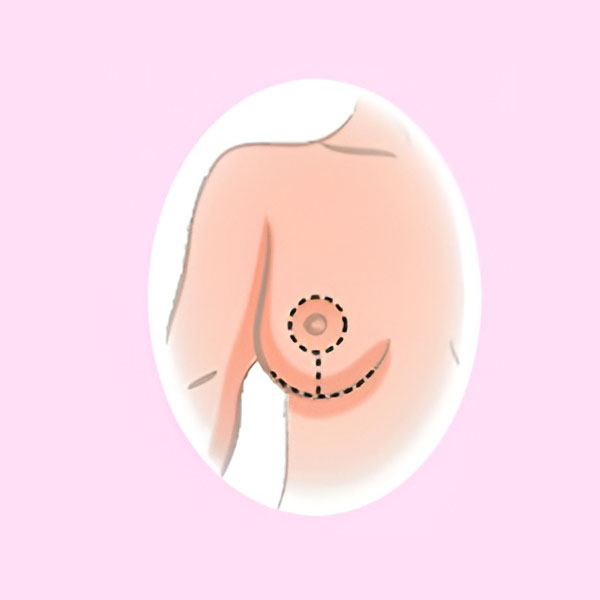Breast Reduction

During breast reduction surgery, the breast is carefully reshaped by removing excess skin and tissue, resulting in a smaller and more proportionate bust size. The decision to undergo breast reduction surgery can be a challenging one for many women. However, those who choose to proceed often find it to be a life-changing decision, ultimately considering it among the best choices they have made for themselves.
What is Breast Reduction?
Breast reduction surgery, also known as reduction mammaplasty, removes excess fat, breast tissue, and skin from large breasts. It eases discomfort, improves appearance, boosts self-image, and enables greater participation in physical activities.
Why is Breast Reduction Surgery done?
The motivations behind women opting for breast reduction surgery are diverse, but all share a common objective of enhancing their overall quality of life:
· Boosted self-assurance and self-expression
Many women find that breast reduction surgery improves their confidence and enables them to express themselves more freely, fostering a greater sense of self-acceptance.
· Enhanced shopping experience
A common benefit reported by women is the ease of finding well-fitting clothes, as they can now explore a wider range of clothing options and shop at various stores.
· Alleviated back pain
Smaller breasts typically lead to significant reductions in back pain, allowing women to experience increased energy and improved comfort throughout the day.
· Relieved bra discomfort
By reducing the weight of their breasts, the majority of women experience a notable reduction in bra strap pain, making wearing bras a more comfortable experience.
· Improved exercise capacity
Women who previously faced pain and discomfort due to excessively large breasts find that breast reduction surgery enables them to exercise more comfortably and engage in physical activities without limitations.
· Reduced skin irritation
For individuals with very large breasts, skin irritation beneath the breasts is a common issue. Breast reduction surgery can significantly alleviate this discomfort, leading to improved skin health and overall comfort.
· Enhanced breathing ease
With smaller and more proportionate breasts, women often find it easier to breathe, allowing for a heightened sense of respiratory well-being.
Procedure for Breast Reduction
Breast reduction surgery involves making incisions on the breast skin to remove excess breast tissue and skin, and it can also address dark skin around the nipple, known as the areola. The specific technique used for breast reduction depends on factors such as individual anatomy, breast composition, desired reduction amount, personal preferences, and the surgeon's recommendation. In some cases, liposuction may be used to remove excess fat in combination with the excision techniques.

Step 1: Anesthesia
You will receive medications for comfort during the surgery, typically either intravenous sedation or general anesthesia, based on your doctor's recommendation.

Step 2: Incision
Different incision options are available, including the lollipop incision and keyhole incision, chosen according to your specific needs and goals.

Step 3: Tissue removal and repositioning
Once the incision is made, the nipple, which retains its blood and nerve supply, is repositioned. If necessary, the areola diameter may be reduced by removing skin around its perimeter. Excess breast tissue is removed, and the remaining tissue is lifted and shaped.
In cases of extremely large breasts, the nipple and areola may be completely removed and repositioned higher on the breast using a free nipple graft technique. This may result in the loss of nipple sensation and a longer healing process.

Step 4: Incision closure
The incisions are carefully closed to reshape the smaller breast. Deep sutures are layered within the breast tissue to provide support and shape. Skin adhesives, sutures, and surgical tape are used to close the skin. While incision lines are permanent, they typically fade over time.
It is important to note that breast reduction surgery is a highly personalized procedure, tailored to meet the unique needs and goals of everyone. Consulting with a surgeon in Livglam Clinic in Bangalore is crucial to discuss the specific benefits, potential risks, and expected outcomes based on an individual's circumstances.
What are the potential risks associated with breast reduction?
Like any surgical procedure, breast reduction surgery does carry certain risks and discomforts that patients should be aware of before undergoing the procedure. While these side effects are common and expected during the healing process, it is important to understand and manage them properly. Here are some common side effects and discomforts associated with breast reduction surgery:
- Anesthesia risk: As with any surgery, there is a minimal risk associated with anesthesia administration. However, this risk is typically very low and can be effectively managed by an experienced medical team.
- Swelling and bruising: It is common to experience swelling and bruising in the breast area after surgery. This is a natural response of the body and usually subsides over time as the healing process progresses.
- Fluid accumulation: Some patients may experience fluid accumulation in the surgical area, known as seroma. This can be managed by the surgical team using drains or by draining the fluid during follow-up visits.
- Excessive firmness of breasts: Following breast reduction surgery, it is common for the breasts to feel firmer than usual. This is a temporary condition and typically resolves as the breasts heal and settle into their new shape.
- Deep vein thrombosis (DVT): Although rare, there is a small risk of developing deep vein thrombosis, which is the formation of blood clots in the deep veins. This risk can be minimized by early ambulation after surgery, wearing compression stockings, and following the surgeon's post-operative instructions.
What are the common types of Breast Reduction Techniques?
Breast reduction surgery encompasses three commonly used techniques:
- Liposuction: Offering enduring outcomes with minimal scarring, liposuction is a swifter and less invasive approach for reducing breast size. This technique is suitable for individuals seeking subtle to moderate size reduction, possessing a predominant amount of fatty breast tissue, and exhibiting good skin elasticity. While liposuction reduces breast size, it retains the breast's overall shape, including the placement of the nipple and areola. For those desiring a lift, improved symmetry, or alterations in breast contour, the surgical methods detailed below might be more appropriate.
- Vertical (Lollipop) Breast Reduction: This method necessitates two incisions. One is situated at the outer edge of the areola, while the other extends from the lower areolar boundary to the crease beneath the breast. Although this technique results in more visible scarring compared to liposuction, the scars are located beneath the breast and are generally concealed by clothing or the breast's natural shape. The lollipop breast reduction is well-suited for individuals seeking mild to moderate size reduction, or for those grappling with noticeable sagging who desire significant reshaping and elevation of breast tissue. This approach permits the removal of both fat and glandular tissue, leading to a narrower, uplifted, and remodeled breast appearance where the areola and nipple are repositioned to achieve a natural look.
- Inverted T (Anchor) Breast Reduction: Similar to the vertical incision breast reduction, the inverted T method involves the same two incisions, along with an additional incision following the crease under the breast. Although this technique yields more pronounced scarring, the scars are discreetly positioned based on the breast's form, and they can be concealed by bras and bikini tops. The inverted T breast reduction facilitates more extensive tissue removal and comprehensive reshaping. This approach is particularly suitable for individuals contending with significant sagging or those in need of a substantial reduction in breast size. However, it's important to note that this method entails the longest recovery period.
How much fat can be removed with Breast Reduction Surgery?
The extent of weight reduction achieved through breast reduction surgery is heavily contingent on the magnitude of the reduction required. Individuals necessitating a more substantial reduction will experience a commensurate loss of breast tissue, adipose fat, and skin. Yet, as a general guideline, the weight removed typically ranges from 2 to 8 pounds (approximately 0.9 to 3.6 kg).
How much time does the recovery take after breast reduction surgery?
The duration of recovery varies from person to person, with some individuals requiring a couple of weeks, although individual circumstances differ. Your surgeon will provide guidance on follow-up appointments, which involve the removal of bandages and stitches.
During the recovery phase, it's essential to refrain from engaging in physical activities for at least a month post-surgery.
Anticipate feelings of fatigue and breast discomfort after the procedure. Your surgeon will prescribe oral pain relief medication to help manage these sensations during the initial days. Additionally, it's advisable to avoid lifting heavy objects.
Certain individuals may experience emotional responses, including feelings of depression, following the surgery. While such reactions can be within the realm of normalcy, it's vital to communicate all your concerns to your doctor. This open dialogue ensures comprehensive care during your recovery journey.
How much does Breast Reduction cost?
Breast reduction surgery in India is typically priced at an average of INR Rs. 1,30,000, with the maximum cost reaching up to INR Rs. 2,44,000. In Bangalore, the cost of breast reduction surgery is particularly appealing due to its affordability without compromising quality outcomes. The average price range for breast reduction surgery in Bangalore is approximately INR Rs. 60,000 to 1,50,000 INR. This cost range reflects the budget-friendly advantages of undergoing the procedure in Bangalore while still ensuring favorable results. However, it's important to note that the actual cost may vary based on individual factors.
Frequently Asked Questions:
While it's possible to experience temporary or permanent changes in nipple sensation, the majority of patients maintain normal sensation or have only minimal alterations. Your surgeon will take precautions to preserve nipple sensitivity during the procedure.
Breast reduction surgery can potentially impact breastfeeding ability. However, many women are still able to breastfeed after the procedure. Discuss your plans for breastfeeding with your surgeon, as they can employ techniques to minimize potential disruption.
The recovery period varies for everyone, but most patients can expect about two to four weeks of initial healing time. It's important to follow your surgeon's post-operative instructions, including wearing a supportive bra and avoiding strenuous activities during the initial recovery phase.
In some cases, health insurance may cover breast reduction surgery if it is deemed medically necessary due to physical discomfort or health issues caused by large breasts. It's advisable to check with your insurance provider to understand their specific coverage policies and requirements.
Breast reduction surgery does not prevent you from having children in the future. However, it's important to consider that pregnancy and breastfeeding can potentially affect the size and shape of your breasts, potentially reversing some of the benefits achieved through the surgery. It's best to discuss your future plans with your surgeon to determine the most appropriate timing for the procedure.
Procedure Time:
- 2-5 hours
Full Recovery:
- 6 weeks
Anaesthetic:
• General
Back to work:
• After 2 weeks
Duration of results:
• Permanent
Results:
• Noticeable within 2 weeks
Temporary risks & complications:
• May include soreness, bleeding, persistent pain, and infection
• *Individual results and reactions may vary.
